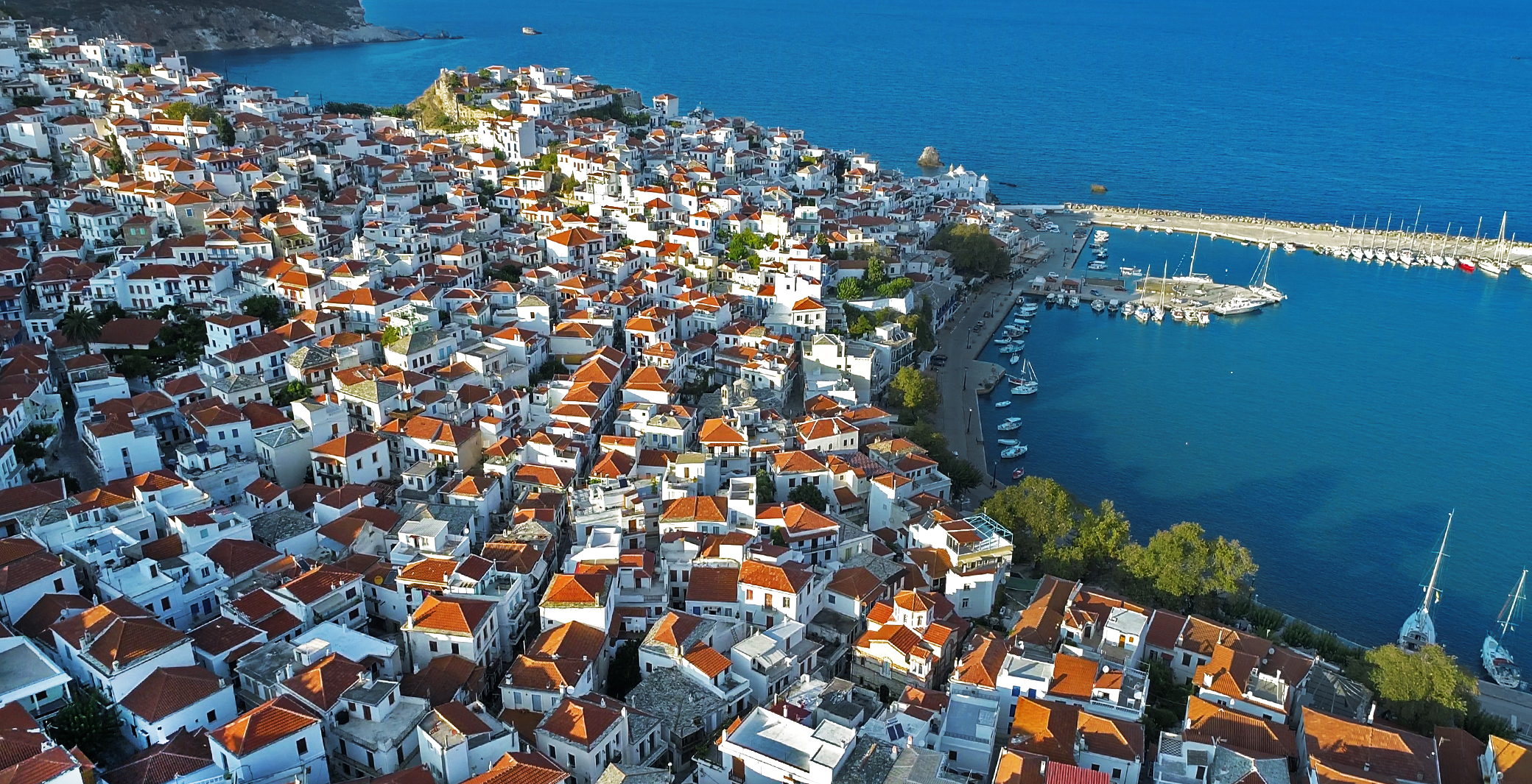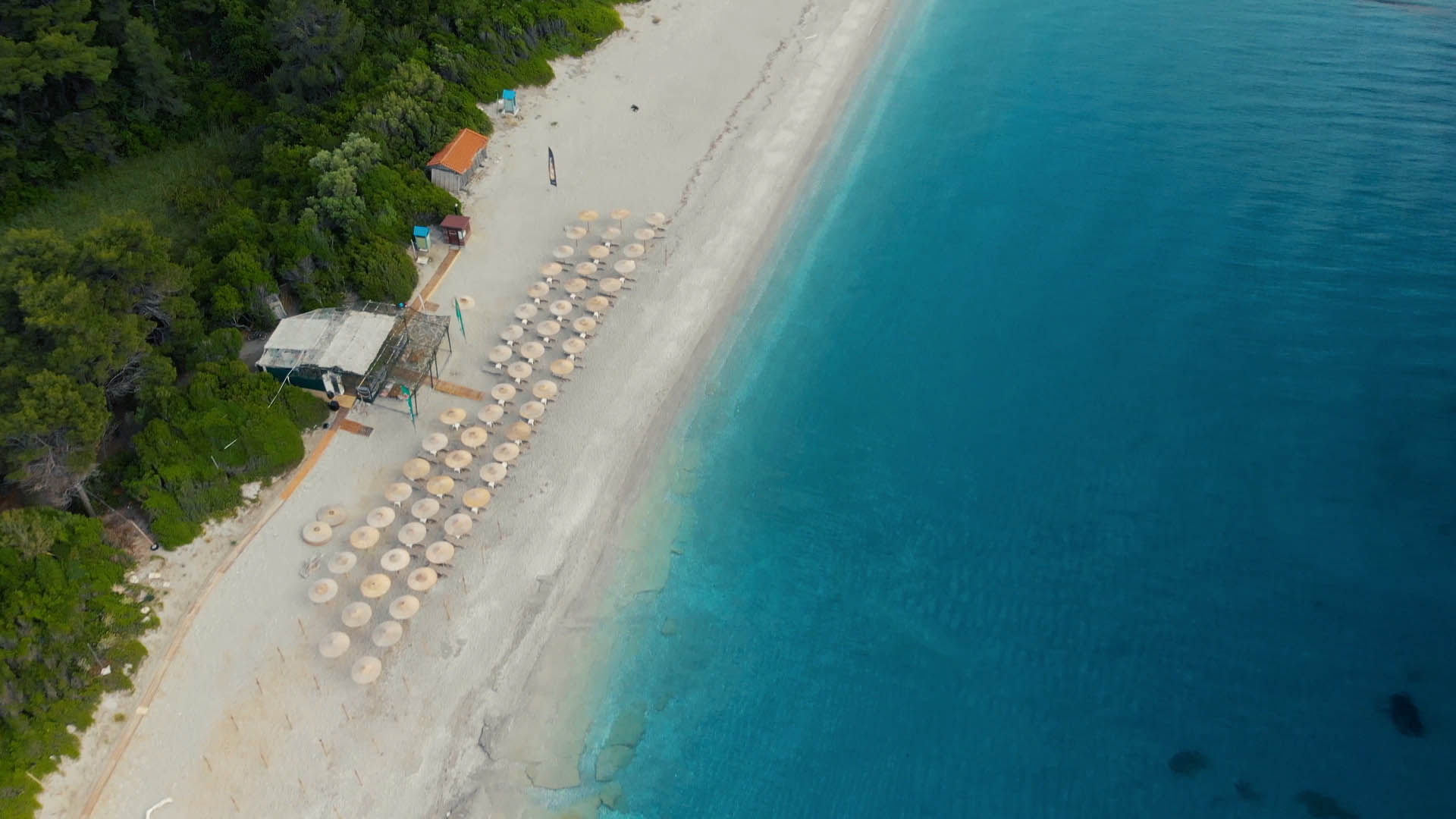Skopelos will truly enter your heart when it “tells” you its story and reveals its secrets. Its story, full of changes, with Ancient Greeks, Byzantines, Venetians, Turks, and pirates, harmoniously “ties” with the mythology that claims the first settler of the island, Staphylos, to be the son of Dionysus and Ariadne. A journey into the past begins. We invite you to wander through the following sections and above all to “live” the history up close, with us!
Ancient Times
Our knowledge of the period from the post-Mycenaean era to ancient times is insufficient. From the 6th century BC to the early 5th century BC, it is considered a period of prosperity for Peparethos, during which silver coins were minted and trade relations with other Aegean city-states developed. Particular emphasis is placed on the export of products, such as the famous Peparethian wine and the island’s high-quality and sought-after olive oil.
One significant contribution of the island to ancient events was the participation of its athletes in the Olympic Games. The greatest success was recorded in the Olympics of 569 BC, when the athlete Agnon from Peparethos won in the stadion event, which was known to be a foot race. In his honor, the Ancients depicted his face on coins, and in modern times, the name was given to the present-day bay of the same name, because tradition says that Agnon, after his victory, disembarked there with his ship. Another significant event in the ancient history of the island was the victorious battle against the Carians, during which the inhabitants of Peparethos dedicated a statue of the God Apollo at the Oracle of Delphi. It is noted that after the Persian Wars, Peparethos lost its autonomy and became part of the First Athenian League.
According to the historian Thucydides, in Skopelos around 427 BC, a strong earthquake occurred, causing a large tidal wave that resulted in the collapse of many public buildings. Finally, ancient Skopelos was initially under the guardianship of the Spartans for a short period, and later it was incorporated into the Second Athenian League.
Hellenistic times
Peparethus (Ancient Skopelos) during the Hellenistic Period (late 4th to 1st century BC) was often a focal point of conflict between the successors as well as a point of contention between Romans and Macedonians.
Peparethos (Skopelos) during the late Classical and Hellenistic periods “minted” bronze coins, and during this period, temples and fortifications were built in several locations on the island, the ruins of which still survive. One of the main products of production and trade was the famous “Peparethian wine,” which according to Aristotle was considered a very famous, sought-after, and aphrodisiac wine.
During the period of Roman rule, which began in 146 BC with the conquest of the Greek world, the Roman conquerors seem to have offered some relative autonomy to Peparethos (Skopelos), because otherwise it would not have been possible for the island to “mint” its own bronze coins. Although Skopelos is not mentioned in ancient sources during this period, the first mention of Skopelos in Roman times was in the texts of Ptolemy in the 2nd century BC due to the scattered rocks and reefs around the island.
Christianity spread quickly in Skopelos. During the 4th century AD, the personality of Bishop Reginos prevailed, who was a leading figure in the spread and establishment of the new religion in the Northern Sporades. However, in 362 AD, during the persecutions of Julian, Reginos was killed by beheading after being tortured. Reginos was declared a Saint by the Orthodox Church and is honored as the island’s protector on February 25th.
Byzantine Times
In the early years of Byzantine history, the island of Skopelos is not often mentioned in the sources of the time and likely served as a place of exile.
The Venetians, after the fall of Constantinople to the Franks, conquer the island, which is administratively integrated into the Duchy of Naxos. Subsequently, it comes under the control of the Gizi ruling house until 1276. After this date, the island of Skopelos once again becomes part of the Byzantine territory. During the Palaiologos period, Skopelos, like other regions of Byzantium, suffers from many destructive raids by various invading conquerors.
Following in 1453, the conquest of the island by the Venetians took place, lasting until 1538. Family names, place names, and several words in the Skopelian dialect are considered part of this Venetian period of Skopelos.
The date of 1538 AD is significant for Skopelos because the Turkish Admiral of the Ottoman fleet, Hayreddin Barbarossa, conquers and devastates the island, but does not cause its complete desolation. After this date, a gradual flourishing of the island is observed, marked by the construction of churches.




